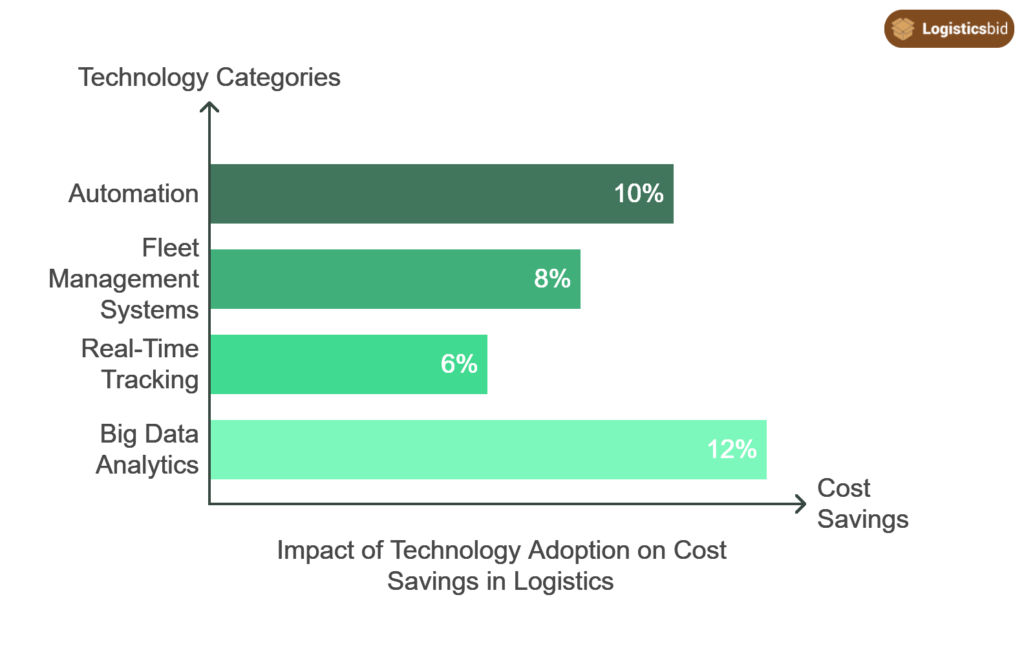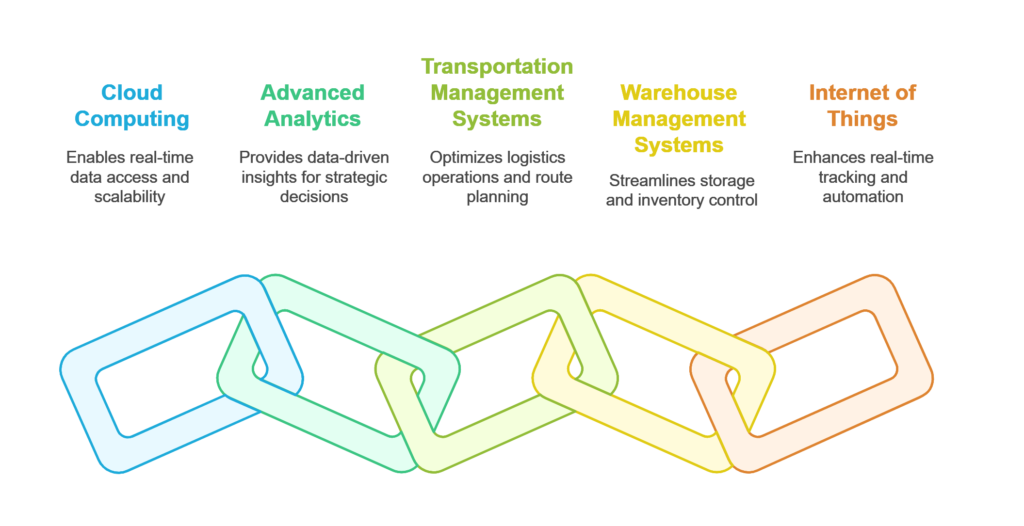
Supply chain management (SCM) encompasses the planning and management of all activities involved in sourcing, procurement, conversion, and logistics. It plays a crucial role in the logistics sector, especially as the Philippines emerges as a dynamic hub in the Asia-Pacific region for trade. By leveraging advanced SCM technologies, businesses can enhance efficiency, reduce costs, and meet customer expectations.
Why Do Logistics Companies Need Advanced Technology Solutions?

Logistics companies must grapple with complex challenges, including fluctuating demand, supply disruptions, and the need for real-time information. According to a study by the World Bank, about 30% of logistics costs in Southeast Asia can be attributed to inefficiencies linked to outdated systems. Thus, it’s imperative for companies to modernize their approach through innovative technologies to maintain competitive advantage and improve service delivery.
What Are the Top Technology Solutions for Supply Chain Management?
Several technology solutions are emerging as essential tools in the logistics sector. Below, we explore five top tech solutions that logistics companies in the Philippines can leverage for effective supply chain management.

1. Cloud Computing: Real-Time Data Access and Scalability
Cloud computing enables logistics companies to store and access data in real time while facilitating scalability for growth.
- Direct Answer: Cloud technology allows easy sharing of information across all supply chain partners, leading to improved collaboration.
- Supporting Evidence: A survey by Gartner (2022) reported that 64% of supply chain professionals consider cloud infrastructure essential for their operations.
- Practical Example: For instance, a logistics partner in the Philippines could utilize cloud-based platforms to manage inventory, allowing them to track stock levels in real time and respond faster to customer orders.
- Transition: While cloud computing addresses data accessibility and management, integrating advanced analytics is equally important for strategic decision-making.
2. Advanced Analytics: Data-Driven Insights for Strategic Decisions
Advanced analytics helps companies sift through vast amounts of data to extract actionable insights that can lead to improved operational efficiency.
- Direct Answer: This technology supports predictive analytics, enabling companies to anticipate demand and optimize inventory levels.
- Supporting Evidence: A report by McKinsey (2023) found that companies utilizing advanced analytics experience a 10% reduction in supply chain costs.
- Practical Example: Logistic firms can analyze historical shipping data to predict peak delivery seasons, enabling them to streamline operations and allocate resources efficiently.
- Transition: However, data-driven strategies must also be supported by robust transportation management systems.
3. Transportation Management Systems (TMS): Optimizing Logistics Operations
Transportation Management Systems streamline logistics operations by automating transportation planning, execution, and optimization.
- Direct Answer: TMS solutions improve route planning and freight tracking, reducing costs associated with transportation.
- Supporting Evidence: According to a study by Transport Topics (2023), companies that implemented a TMS saw a 20% improvement in transport efficiencies.
- Practical Example: A logistics company could use TMS software to optimize delivery routes, minimizing fuel costs and increasing delivery speed.
- Transition: While TMS enhances transportation efficiency, Warehouse Management Systems (WMS) are vital in managing inventory and storage processes.
4. Warehouse Management Systems (WMS): Streamlining Storage and Inventory Control
Warehouse Management Systems optimize warehouse operations by managing inbound and outbound logistics, inventory tracking, and order fulfillment.
- Direct Answer: WMS provides real-time visibility into inventory levels, enhancing order accuracy and reducing storage costs.
- Supporting Evidence: A survey by American Supply Chain Management found that implementing WMS reduced labor costs by 20% and improved inventory accuracy by 30%.
- Practical Example: In a Philippine logistics context, a company can utilize WMS to efficiently manage e-commerce orders, ensuring timely delivery and customer satisfaction.
- Transition: To further bolster operational efficiency, integrating Internet of Things (IoT) technology can provide real-time tracking and automation.
5. Internet of Things (IoT): Real-Time Tracking and Automation
IoT devices improve visibility across the supply chain, enabling logistics companies to monitor equipment and shipment conditions continuously.
- Direct Answer: IoT technology allows for the tracking of assets in real time, improving the management of logistics operations.
- Supporting Evidence: Research from IDC (2022) indicates that 65% of organizations using IoT technology in their supply chains reported enhanced operational efficiency.
- Practical Example: Logistics firms can equip vehicles with IoT sensors to monitor their condition and location, enabling proactive maintenance and reducing delays.
Leading Logistics Companies in the Philippines Embracing Top Tech Solutions
As globalization and e-commerce reshape the logistics landscape in the Philippines, companies are increasingly adopting technology solutions to enhance their supply chain management (SCM). Innovative logistics firms are leveraging advanced tools to boost operational efficiency, minimize costs, and meet the rising expectations of consumers. Below, we highlight some of the top logistics companies embracing these technologies, including Transportify, which is making notable strides in the industry.
1. Transportify: Revolutionizing Last-Mile Delivery
 |
Transportify is a standout logistics company in the Philippines that utilizes technology to streamline last-mile delivery services. Their platform connects individuals and businesses with a network of delivery drivers via a mobile app, significantly reducing transit times.
Technological Solutions:
- Mobile App: Their user-friendly app allows customers to book deliveries in real time, track vehicles, and manage payments seamlessly.
- Dynamic Pricing: By implementing algorithms that adjust costs based on demand and distance, Transportify optimizes pricing for both customers and delivery partners.
Transportify’s approach has not only improved the customer experience but has also led to better route planning and reduced fuel consumption, demonstrating the power of technology in logistics.
2. LBC Express: Leader in Integrated Logistics Solutions
 |
Renowned for its extensive network, LBC Express leverages technology to provide integrated logistics solutions across the Philippines and internationally.
Technological Solutions:
- Warehouse Management System (WMS): LBC uses advanced WMS to automate inventory management and order fulfillment processes, ensuring accuracy and efficiency.
- Tracking System: Their robust tracking system enables customers to monitor shipments in real-time, enhancing transparency and trust.
These technological implementations result in optimized warehouse operations and foster faster delivery timelines, solidifying LBC’s role as a leader in logistics.
3. J&T Express: Engaging E-commerce with Technology
J&T Express has positioned itself as a key player in the e-commerce logistics segment through innovative technological solutions.
Technological Solutions:
- Automated Sorting System: J&T leverages automated sorting systems in their warehouses for improved processing speed and accuracy of packages.
- AI-Powered Analytics: By utilizing AI, J&T analyzes customer data and shipping trends, helping to refine their logistics strategies and improve service quality.
The integration of these technologies enables J&T Express to adapt quickly to market demands, enhancing their service offering to e-commerce businesses.
4. Fast Logistics: Leading with Advanced Analytics
 |
Fast Logistics is known for its focus on using data-driven insights to improve operational efficiency.
Technological Solutions:
- Advanced Analytics: By harnessing big data analytics, Fast Logistics anticipates demand spikes, optimizes inventory levels, and improves route efficiency.
- IoT Integration: They use IoT devices to monitor shipment conditions and vehicle performance, allowing for proactive maintenance and reducing operational delays.
Utilizing advanced analytics has allowed Fast Logistics to create a more responsive supply chain, enhancing their competitive edge in the market.
5. 2GO Group: Enhancing Connectivity through Technology
 |
2GO Group provides integrated logistics services that span sea, land, and air transportation, working to enhance connectivity across the Philippines.
Technological Solutions:
- Cloud Computing: Their shift towards cloud-based platforms enables real-time data access and scalability, which is vital for managing logistics operations efficiently.
- Fleet Management System: 2GO employs sophisticated fleet management systems to optimize routes, reduce operational costs, and enhance customer satisfaction.
Through these tech advancements, 2GO is better positioned to handle the complexities of logistics and maintain high service levels.
Solutions and Recommendations
To successfully implement these top technology solutions, logistics companies in the Philippines should consider the following recommendations:
1. Conduct a Technology Audit
Assess current systems and identify gaps that could be filled by new technologies.
2. Invest in Employee Training
Ensure staff are well-trained in new systems to maximize technology adoption.
3. Foster Collaboration
Engage supply chain partners in the technology adoption process for seamless integration.
4. Evaluate Return on Investment (ROI)
Regularly assess technology performance against operational goals to ensure effective use of resources.
The logistics sector in the Philippines stands at a pivotal moment as businesses adopt advanced technology solutions to enhance supply chain management. By leveraging cloud computing, advanced analytics, TMS, WMS, and IoT, logistics companies can significantly improve efficiency, reduce costs, and provide superior service.
Key Takeaways on Top Tech Solutions
– The integration of top tech solutions in SCM leads to better data sharing and operational transparency.
– Implementing TMS and WMS enhances the management of transportation and warehouse operations.
– IoT sensors provide crucial real-time insights for proactive logistics management.
As the logistics landscape continues to evolve, embracing technology will be key for companies aiming to thrive in an increasingly competitive environment.
SEE ALSO:
